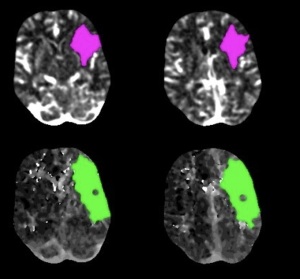by
John R. Fischer, Senior Reporter | May 12, 2020

Stroke assessments have dropped by nearly 40% due to fears of contracting COVID-19 and stay-at-home orders.
Assessments for stroke have dropped by nearly 40% at U.S. hospitals throughout the COVID-19 pandemic, according to researchers at Washington University School of Medicine.
The St. Louis-based team assert that stay-at-home orders and fears of contracting the virus are preventing patients from obtaining potentially lifesaving treatment, an action that puts them at risk of incurring long-term and permanent complications. Their findings are based on their evaluation of stroke care at more than 800 hospitals across 49 states and the District of Columbia.
“For patients with severe strokes that do not receive these treatments, 75% or more will not return to anything resembling a normal life,” lead author Dr. Akash Kansagra, an assistant professor of radiology at Washington University’s Mallinckrodt Institute of Radiology (MIR), told HCB News. “Physicians working 30 years ago used to refer to stroke as a "nursing home diagnosis" because there were no treatments available to rescue patients from death or disability. The situation is very different now, and those of us that spend our lives treating stroke never want to return to an era where patients cannot get treatment.”



Ad Statistics
Times Displayed: 60894
Times Visited: 1960 Ampronix, a Top Master Distributor for Sony Medical, provides Sales, Service & Exchanges for Sony Surgical Displays, Printers, & More. Rely on Us for Expert Support Tailored to Your Needs. Email info@ampronix.com or Call 949-273-8000 for Premier Pricing.
Kansagra and his colleagues based their findings on the use of RAPID, a software commonly used by hospitals to analyze brain scans of stroke patients. They compared how often the software was used in February, before the pandemic, to a two-week period from March 26 to April 8, when stay-at-home orders were in place throughout much of the country.
The software was used for 231,753 patients in total at 856 hospitals in DC and all 50 states, excluding New Hampshire. Images for an average of 1.18 patients per day were assessed with it in February, compared to 0.72 per day during the pandemic, representing a drop of 39%. The drop was large even in places where COVID-19 cases were few and hospitals were not overwhelmed, showing that patients are still easily able to obtain treatment.
Almost 800,000 patients a year experience stroke in the U.S., making it the fifth leading cause of death and leading cause for long-term disability. Prompt treatment is required to avoid these outcomes, as well as the associated costs of untreated stroke. Treatment depends on the type of stroke one has. For instance, those that require clot-busting drugs should receive them only within 4½ hours of symptom onset, while surgery is only possible within 24 hours of symptom onset.
Kansagra warns that not seeking treatment for stroke puts patients at greater risk than they would be if they contracted COVID-19.
“Physicians have been encouraging stroke victims to seek immediate help for many years, but family and friends are the front line,” he said. “Stroke victims cannot always call 911 for themselves. We need to remind the people around these patients that treatment is critical, warranted, and available, even during the pandemic. Stroke is among the most devastating diseases we face in medicine today, and we aren't protecting anybody by denying them potentially lifesaving treatments.”
The findings were published in
The New England Journal of Medicine.

